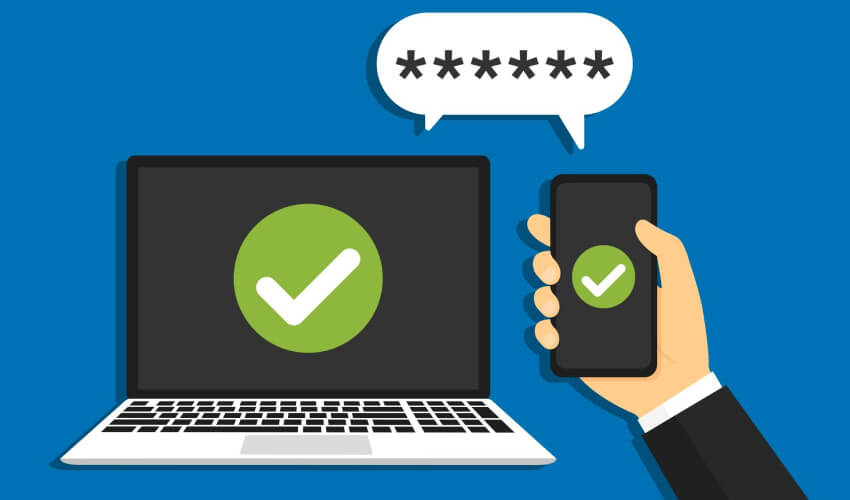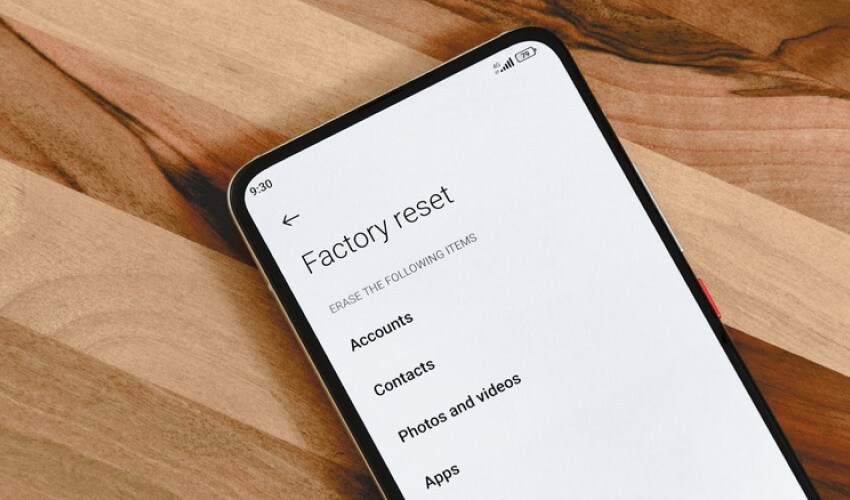Spyware on Android has become very common these days. Once Spyware has been installed in a device, it can be incredibly challenging to either identify it or remove Spyware.
There are various methods to detect Spyware and remove it from a device. So, if you’re wondering how you can get rid of Spyware on Android, then this post is for you.
In this post, we will walk you through the various types of Spyware Android, along with the steps to detect spyware, and remove spyware from your mobile devices.
So, let’s get started…
Table of Contents
- What exactly is Spyware?
- How to Check for Spyware on Android?
- How to Stay Alert at All Times?
- How to Find and Remove Spyware from Android Phones?
- Check for any harmful programmes
- Install Antivirus software
- Change your password
- Remove centralized services from the compromised device
- 2 Factor authentication
- Consider creating a new email address
- Stay up to date
- Keep your gadgets safe
- Reboot
- Change your default web browser from Opera or Chrome to something else
- Use a secure network
- Avoid using a shared network
- Utilize a top-tier VPN provider
- Factory resetting
What exactly is Spyware?
Spyware, often known as nuisance-ware, is software that monitors and records your activity on your device in the background. It does it from the websites you visit to make your purchases. It then provides all of this sensitive information, including login credentials and credit card details, to third-party organizations.
It is helpful to understand the variations between the many types of Spyware before attempting to eliminate the problem. Know that even when you try to install genuine software, you may get this unwanted software along with them. Unwanted software may collect information about your web browsing habits in order to sell it to advertising agencies and networks.
More often than not, these programs are not often harmful and do not pose a threat to your system’s essential security. Instead, the purpose of these malware programs is to generate illegal cash by infecting computers and causing them to view or click on advertisements against their will.
Spyware comes in various forms, from the most basic to the most advanced and commercial Spyware. Usually, generic forms of malware take data from operating systems and clipboards, as well as anything that could potentially be valuable, such as Bitcoin wallet info or account passwords. Spyware can be used in generic phishing attempts and is not always used to target a specific user.
Phishing, malicious email attachments, URLs shared on social media, and fraudulent text messages are all potential entry points for Spyware into your device.
The most advanced form of Spyware is sometimes referred to as stalkerware. When it comes to stalkerware, the initial infection messages may be more personalized and tailored to the person who has been targeted.
This malware can occasionally be found on desktop computers; nonetheless, it is currently most typically installed on mobile devices.
Cybercriminals use Spyware and stalker ware to monitor emails, SMS, and MMS messages that are sent and received; to intercept live calls for the purpose of eavesdropping across standard telephone lines or Voice over IP (VoIP) applications; to track victims via GPS; to covertly record environmental noise or take photos; or to hijack social media apps such as Facebook and WhatsApp. They may also offer functions for recording your keystrokes.
These programs are often utilized to spy on an individual by seeing what that person does, what they say, and where they travel.
Then, there is commercial Spyware with government-grade capabilities. Pegasus is the most well-known recent case. It was presented as a tool to governments for the goal of countering terrorism and for law enforcement objectives. Pegasus spyware was responsible for the theft of 50,000 phone numbers, which were then distributed to various news outlets. Some of these numbers belonged to members of Arab royal families, as well as journalists, corporate executives, political dissidents, activists, and other public figures.
All in all, spyware Android assaults can be launched against anyone, from individuals to large organizations, leaders to public figures, and so on. The idea is to have an understanding of Spyware and when you find one in your device, you must take appropriate steps instantly.
How to Check for Spyware on Android?
Locating Spyware on your Android phone may seem like a task; however, it is not like that. Here are some warning indicators that could indicate that there is possible spyware on your device:
- Your phone functions very slowly.
- Your device turns off by itself without your instruction.
- You need to charge the battery of your phone more frequently than is typical.
- You receive strange emails or text messages
- You stumble across peculiar directories or files on your device.
- You are frequently taken to unfamiliar websites when scrolling through your device.
- There is unexpected draining of the handset’s battery, overheating, and odd behavior from the operating system or apps on the device.
- You experience random reboots or unexpected activation of settings like the GPS and location services on your device.
- There is an excessive amount of pop-up advertisements on your phone.
- There is an unusual sound when you’re on call.
- You are on a call when you hear unusual noises.
- There is a rapid spike in the amount of data being used.
- There are some mysterious programs running on your device.
- The indicators that an attack is imminent.
- You start to receive unusual messages or emails through social media platforms.
So, these are the ways you can find Spyware on Android. Once you detect Spyware on your device, you must try to remove Spyware from your device.
How to Stay Alert at All Times?
In this era, when cybercriminals are always eyeing your online activities, it is crucial to stay alert. There are various ways you can be alert at all times, such as:
Never click on any link that comes from any unknown or questionable source.
If you receive strange or unusual messages or emails through social media platforms, this may be an effort to infect your device with Spyware. Avoid clicking on such messages or email links.
Never download any unknown item online, no matter how enticing it looks.
Download apps from a reliable source only, such as Google Play Store for Android.
There are variants of Spyware that are primarily concerned with the fraudulent generation of revenue, and these variants might be able to obtain sufficient rights to affect your financial situation. If you are signed up for services or premium SMS plans even though you are aware that you did not consent to them, this may be an indication that Spyware is present on your smartphone. Keep a close eye on your credit card statements in case there are any indications of shady transactions.
Aside from that, Spyware or other forms of dangerous software could be installed on your device through an app that appeared to be completely safe in the beginning, such as a currency converter, calculator, or travel planner app. Once a large number of people download these apps, their functionalities begin to alter.
Over a million users had downloaded malicious apps that were posing as Bluetooth utilities before Google deleted them from the Google Play Store a year ago. These apps have been downloaded by over a million users. The apps initially did not appear to be harmful; nevertheless, after a few days of using them, users were inundated with advertisements and pop-up windows.
Usually, cyber attackers use spoofed email addresses. You may find that the name of the sender is known to you. Even if it is so, you need to react to that email. Cyber attackers often send emails that seem to come from reliable sources, such as your bank. Most people end up getting trapped as they act upon it instantly, which is not wise.
During the COVID-19 pandemic, cyber attackers sent emails advertising appointments for vaccinations. The victims would inadvertently download Spyware or malware when they clicked on a malicious link, or they would voluntarily hand up their personal information by filling out false request forms.
So, be aware of all the online crimes, including spyware android. Aside from that, if your phone goes missing or then reappears with new settings or changes that you are not familiar with, this may be an indication that it has been tampered with.
Spyware comes in many different flavors, and some of them will hide their identity by using generic names and images. No matter how helpful they appear, making sure to conduct proper research about the program that you are not acquainted with is always wise. Conducting a search online can assist you in determining whether or not it is real.
How to Find and Remove Spyware from Android Phones?
Getting rid of Spyware may seem like a challenge, especially if you’re not aware of the basics of these cyberattacks. More often than not, Spyware is designed to be difficult to detect and even more challenging to delete from a device. However, the best thing is that it is not impossible to get rid of Spyware Android.
Here are some of the best ways you can remove Spyware from Android phones
1. Check for any harmful programs
Checking your phone for any malicious programs is the first and most important step in locating and removing Spyware from an Android phone. If you discover Spyware on your device, you must take corrective measures immediately.

2. Install Antivirus software
Antivirus software designed specifically for mobile devices can help you identify and eliminate malware from your device. This is, in fact, one of the best and the quickest solution to get rid of unwanted programs from your phone. Several companies in the cybersecurity sector, such as Malwarebytes, Avast, and Bitdefender, provide mobile spyware-scanning tools.
3. Change your password
You must not always use the same password, especially if your device has been compromised. The rule of thumb is to change your passwords after every 3 to 6 months. Cyber security experts suggest changing passwords after three months intervals to stay safe online.
4. Remove centralized services from the compromised device
The vast majority of us only have one or two main accounts, such as an email address. These accounts serve as the connecting point for all of our other services. If you find that your device has been compromised, it’s advised to immediately disconnect from centralized services.
5. 2 Factor authentication
2-factor authentication is yet another method to remove Spyware from Android. It necessitates additional consent from a mobile device before allowing any activity or logins to take place. For instance, when you log in for net banking, it asks for a one-time password (OTP) to get started.

6. Consider creating a new email address
If your email has been compromised, it’s advised to create a new one. Also, don’t miss to inform your employees, colleagues, clients, and other people about your older email being compromised. It will help them stay safe.
7. Stay up to date
We are living in an era of advancement every day, hackers release a slew of new viruses and Spyware in response to the newest innovations in technology. In this case, knowing about the latest iterations of viruses and other undesirable software is essential.
8. Keep your gadgets safe
No matter how close your colleague is to you. There is no point trusting people with your devices. It’s always good to keep your gadgets safe from others. Ensure all your devices, from your phone to your computer, are password protected. Whenever you go out (even for ten minutes), lock your device. Keep your mobile device secure with a PIN code, a pattern, or biometrics.
9. Reboot
If you’re having chronic issues, rebooting your device once a day should do the trick. Rebooting can be an effective approach to deter attackers, as it appears that the great majority of infections are produced by zero-day exploits that have very little persistence.
10. Change your default web browser from Opera or Chrome to something else
Some vulnerabilities can’t be exploited with Firefox Focus and similar browsers. Hence, it’s crucial to change your web browser.

11. Use a secure network
Free WiFi may attract you for sure. But remember that FREE is not always safe. Hence, it is crucial that you avoid using public networks. Doing so can be risky.
12. Avoid using a shared network
A shared network, as the name implies, is one that many people use simultaneously, making it an insecure option. Avoid using a shared network at all costs. It’s cheaper up front, but any unwanted software on your smartphone could end up costing you more money in the long term.
13. Utilize a top-tier VPN provider
There are numerous VPN providers out there. However, it is crucial that you utilize only a top-tier VPN provider in your area. A reputable VPN service provider will always ensure your online safety and security. Moreover, they will help you detect Spyware on android Virtual private networks and provide you with appropriate solutions in a timely manner.
14. Factory resetting
If all else fails, restore it to factory settings. It is likely that a factory reset and clean installation of the device in question is required to completely remove Spyware and stalkerware. But first, make sure you have a copy of any data you consider essential. All you have to do is to follow these steps:

- Go to the Settings Menu on your Android device
- Then, go to General Management
- Finally, click on Factory Data Reset. And you’re done!
Putting it all together….
So, this is all about Spyware on Android. You can follow the above-outlined steps to detect Spyware and remove Spyware from your Android phone.
The moment you get rid of the Spyware on your device, the attacker will receive a notification that the victim’s device has been cleaned up, especially in the case of stalker ware. If your data transmission suddenly stops, it’s a sign that the harmful code has been removed from your device.
Thanks for reading! Hope this article has been informative for you!


